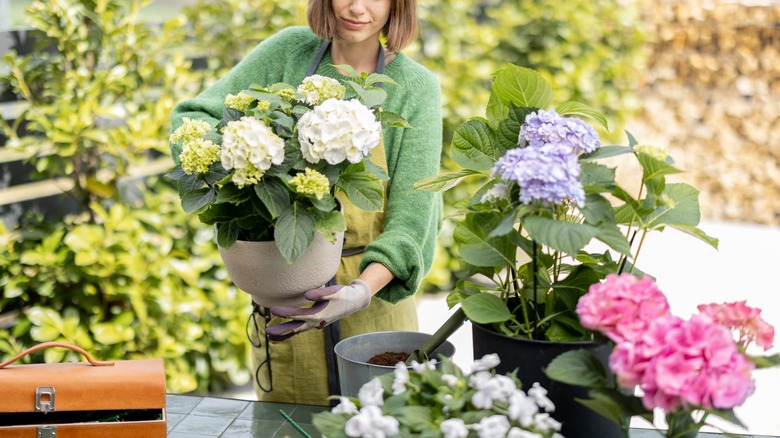How To Easily & Successfully Divide Your Hydrangeas
With their vibrant flowers and luscious foliage, hydrangeas are a gorgeous addition to any garden or outdoor space. However, as the plants mature, they can outgrow their designated areas, losing their vitality and beauty. This can be a problem in the potential decline of the health and beauty of existing plants. Overcrowding is a common issue as they spread and flourish, resulting in plants that may intertwine, compete for resources, and reduce the number and size of their blooms. In addition, it can be expensive to buy more plants if you want to add more hydrangeas to your space.
Fortunately, dividing hydrangeas is a gardening technique that's both economical and gratifying. To divide hydrangeas, you can carefully dig around the plant and gently separate natural divisions in the root system by hand. This method allows for the multiplication of the hydrangea collection without the financial burden of purchasing new plants. It also guarantees that each plant has enough space and nutrients to thrive, resulting in healthier plants with more abundant and glorious flowers.
Steps for hand-dividing hydrangeas
You'll need a sturdy shovel or spade as well as a pair of sharp pruning shears or garden scissors to trim any excessive growth, damaged roots, or broken stems. Insert the shovel into the soil about two feet away from the stem and gently pry the plant out of the ground, being careful to maintain as much of the root system as possible. Once you've successfully removed the hydrangea clump, examine its root system. Look for natural divisions or sections where the plant can be separated, often where stems emerge from the root crown. Use your hands or a clean garden tool to gently separate the sections, making sure that each section has enough healthy roots attached.
The best times to divide hydrangeas are spring, before new growth emerges, and autumn, several weeks before the first frost. Water the hydrangeas thoroughly the day before to help loosen the soil around the roots. It's also best to choose a day with mild weather, preferably overcast, to minimize any stress on the plants during the division. When separating the sections, avoid tearing or breaking the roots. Gentle handling will contribute to quicker recovery and reestablishment. Although it's necessary to trim excess roots, refrain from over-pruning. The key to success is balance; removing too many roots can stress the plant, while too few can delay growth.

